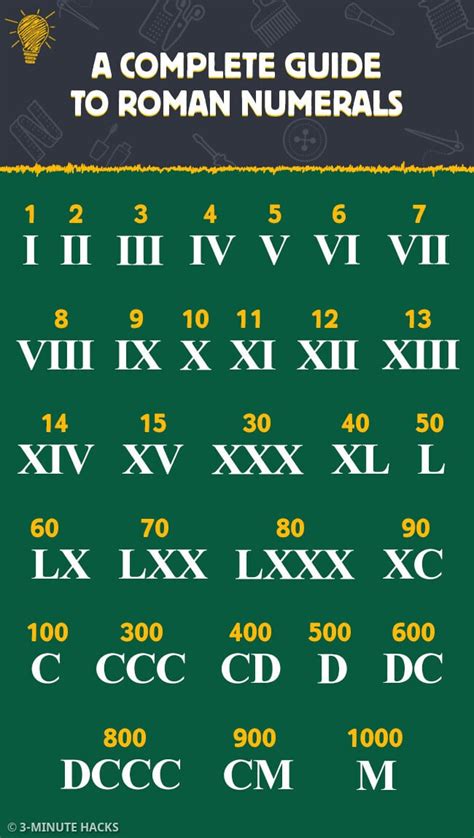How To Write 170 In Roman Numerals
Kalali
Apr 07, 2025 · 4 min read

Table of Contents
How to Write 170 in Roman Numerals: A Comprehensive Guide
Roman numerals, a system of numerical notation originating in ancient Rome, continue to hold relevance in various contexts today. From copyright dates on movies to chapter numbering in books, understanding Roman numerals remains a valuable skill. This comprehensive guide will delve into the intricacies of Roman numerals, specifically focusing on how to write 170 in Roman numerals, and exploring the broader system's rules and conventions.
Understanding the Roman Numeral System
The Roman numeral system utilizes seven basic symbols to represent numbers:
- I: 1
- V: 5
- X: 10
- L: 50
- C: 100
- D: 500
- M: 1000
These symbols are combined and manipulated according to specific rules to create larger numbers. The core principle lies in addition and subtraction.
The Additive Principle
When a smaller numeral precedes a larger one, it is subtracted from the larger numeral. For example:
- IV: 4 (5 - 1)
- IX: 9 (10 - 1)
- XL: 40 (50 - 10)
- XC: 90 (100 - 10)
- CD: 400 (500 - 100)
- CM: 900 (1000 - 100)
This subtractive principle is crucial for avoiding repetitive sequences and making the system more efficient.
The Subtractive Principle
Conversely, when a smaller numeral follows a larger one, it is added to the larger numeral. For example:
- VI: 6 (5 + 1)
- XI: 11 (10 + 1)
- LX: 60 (50 + 10)
- CX: 110 (100 + 10)
- DC: 600 (500 + 100)
- MC: 1100 (1000 + 100)
This additive principle forms the basis of constructing most Roman numerals. It's important to note that only one smaller numeral can be subtracted from a larger one. You wouldn't write IIX for 8; instead, you'd use VIII.
Writing 170 in Roman Numerals: A Step-by-Step Approach
Now, let's tackle the main question: how do we represent 170 using Roman numerals? We can break down 170 into its constituent parts: 100 + 70.
-
Representing 100: The Roman numeral for 100 is C.
-
Representing 70: We can represent 70 as 50 + 20. The Roman numeral for 50 is L, and for 20 it's XX (10 + 10).
Therefore, to write 170 in Roman numerals, we combine these components: CLXX.
Common Mistakes and Avoiding Them
While the Roman numeral system appears straightforward, several common errors can occur, especially when dealing with larger numbers.
Incorrect Subtraction
A frequent mistake involves subtracting more than one smaller numeral from a larger one. For example, writing IIX instead of VIII for 8 is incorrect. Remember, only one subtractive instance is permitted.
Repetitive Subtraction
Another common error is using the same numeral twice in a subtractive sequence. For instance, writing XXXX for 40 is wrong; the correct form is XL.
Incorrect Order of Numerals
The order of numerals matters greatly. Placing numerals incorrectly can lead to an incorrect value. Always ensure the numerals are arranged in descending order of value, except when using the subtractive principle.
Advanced Roman Numerals and Their Applications
The basic Roman numeral system can be extended to represent larger numbers by combining the basic symbols and applying the additive and subtractive principles consistently. For numbers exceeding 1000, bars are sometimes used to indicate multiplication by 1000. For example, $\overline{V}$ represents 5000, and $\overline{X}$ represents 10,000.
Modern Usage of Roman Numerals
Though not used for everyday arithmetic, Roman numerals persist in several contexts:
- Copyright Dates: Often seen on movies, books, and other works.
- Chapter Numbering: Many books use Roman numerals to number their chapters.
- Outlines: Roman numerals are useful for creating structured outlines.
- Clock Faces: Some clocks utilize Roman numerals for the hours.
- Monarchs and Popes: Historical figures like monarchs and popes are sometimes identified by ordinal numbers expressed in Roman numerals (e.g., Louis XIV).
Tips for Mastering Roman Numerals
Learning Roman numerals requires practice and attention to detail. Here are some tips to help you master the system:
- Start with the basics: Memorize the seven fundamental symbols and their values.
- Practice regularly: Try converting numbers to Roman numerals and vice-versa regularly.
- Use online resources: Several websites offer Roman numeral converters and practice exercises.
- Break down numbers: When dealing with larger numbers, break them into smaller components, and then combine the corresponding Roman numerals.
- Check your work: Always double-check your conversions to ensure accuracy.
Conclusion
Understanding Roman numerals, including how to represent numbers like 170 (CLXX), is a valuable skill with practical applications. By understanding the additive and subtractive principles and avoiding common mistakes, one can confidently work with this ancient numerical system. Remember that consistent practice and attention to detail are key to mastering Roman numerals. With diligent effort, you'll soon be proficient in converting between Arabic and Roman numerals. The seemingly complex system becomes manageable through careful application of its fundamental rules. So, go ahead and start practicing; you might be surprised at how quickly you learn!
Latest Posts
Latest Posts
-
4 Gallons Is How Many Pints
Apr 11, 2025
-
Are Ionic Bonds Between Metals And Nonmetals
Apr 11, 2025
-
How Long Is 27 Cm In Inches
Apr 11, 2025
-
How Many Oz In 1 2 Liters
Apr 11, 2025
-
What Is The Lcm Of 5 And 9
Apr 11, 2025
Related Post
Thank you for visiting our website which covers about How To Write 170 In Roman Numerals . We hope the information provided has been useful to you. Feel free to contact us if you have any questions or need further assistance. See you next time and don't miss to bookmark.